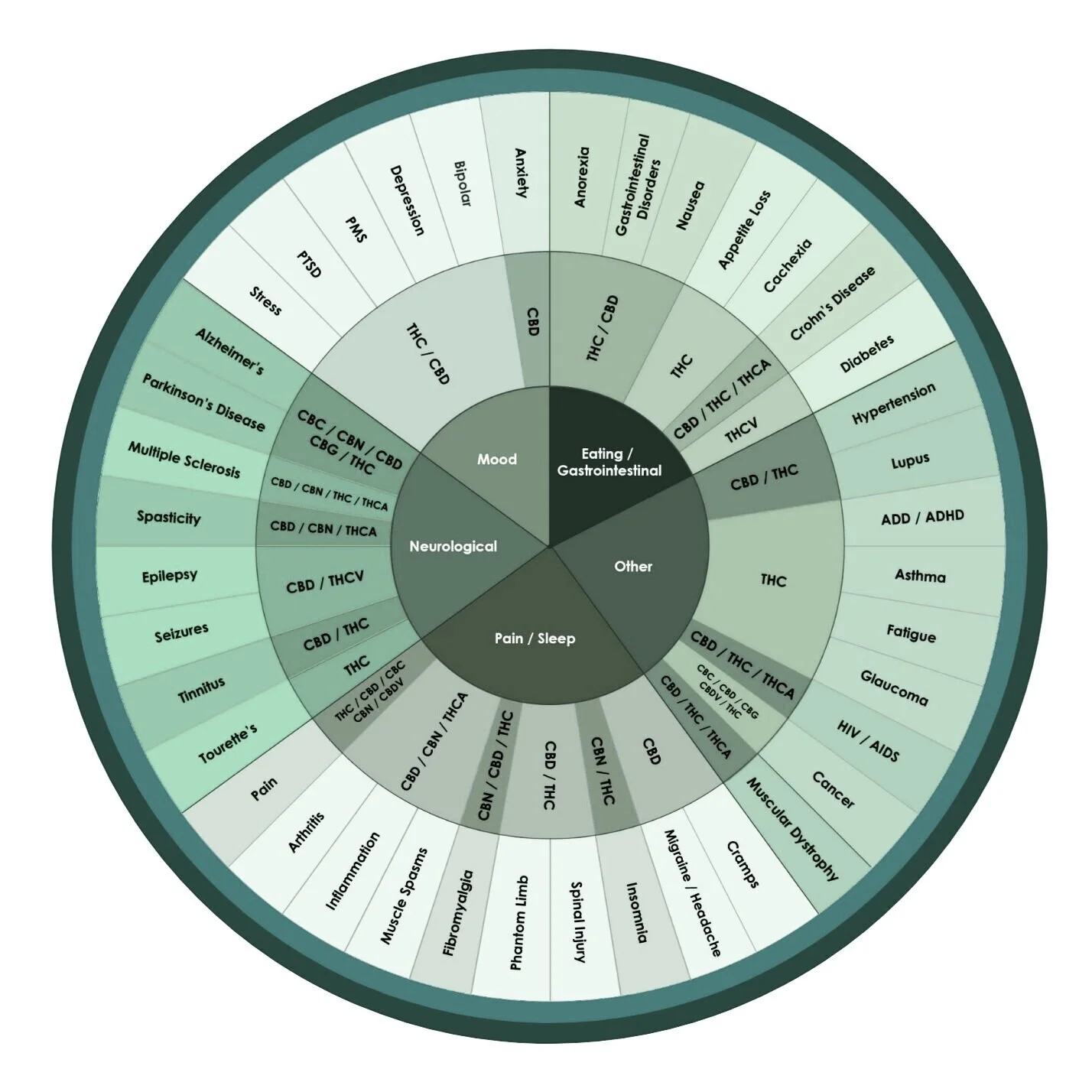Cannabinoids
Cannabinoids are the chemical compounds secreted by cannabis flowers that may provide relief to an array of symptoms including pain, nausea, anxiety, and inflammation.
They interact with the human endocannabinoid system to produce effects depending on dose and strain. There are many cannabinoids found in the cannabis plant and how they react with the ECS system varies greatly from one individual to the next.
Cannabis doesn’t directly make the most famous cannabinoids associated with the plant, THC and CBD. Instead, it synthesizes several cannabinoid acids. These cannabinoid acids must be “activated” (decarboxylated), usually by heat, to yield the compounds that most consumers are after (THC or CBD). But in addition to THCA and CBDA, there are number of related cannabinoid acids that can be produced by cannabis. These are:
CBGA (Cannabigerolic acid)
THCA (Δ9-tetrahydrocannabinolic acid)
CBDA (Cannabidiolic acid)
CBCA (Cannabichromenenic acid)
CBGVA (Cannabigerovarinic acid)
THCVA (Tetrahydrocanabivarinic acid)
CBDVA (Cannabidivarinic acid)
CBCVA (Cannabichromevarinic acid)
Most cannabinoids will not get you high
THC is the only plant cannabinoid that you know for sure has clear intoxicating effects on its own. There is some evidence to suggest that THCV may also have intoxicating effects, although whether it does may depend on dose. However, like most other plant cannabinoids, THCV is usually not present in significant quantities in commercial strains and cannabis products.
While most plant cannabinoids are not intoxicating themselves, their presence can influence how THC affects you. The best example of this comes from CBD. Even though it wouldn’t get you high by itself, it influences the way that THC interacts with the CB1 receptors in your endocannabinoid system, and can therefore influence exactly how a cannabis product will affect you.
THCV may also influence THC’s effects. At relatively low doses, THCV appears to diminish THC’s ability to activate CB1 receptors, like CBD. However, at relatively high doses, THCV may start to activate CB1 receptors, like THC. The exact dose that you consume can greatly influence how a compound affects you. But because THCV and the other, lesser-known cannabinoids are generally less abundant in cannabis, they have also been studied much less. There’s a lot more for us to learn about their effects in humans.
THC can turn into CBN
Another plant cannabinoid you may have heard about is cannabinol (CBN). This is another example of a plant cannabinoid that is not directly synthesized by cannabis. Instead, CBN is a breakdown product of THC. This is why older flower products will tend to have more CBN, especially when not properly stored. With time and exposure to oxygen, THC gradually breaks down into CBN.
What Is CBN (Cannabinol) & What Are the Benefits of This Cannabinoid?
CBN has been observed to result in greater sedation when combined with THC, and may also have anticonvulsant (anti-seizure), anti-inflammatory, and antibiotic properties.
References:
Izzo AA, Borrelli F, Capasso R, Di marzo V, Mechoulam R. Non-psychotropic plant cannabinoids: new therapeutic opportunities from an ancient herb. Trends Pharmacol Sci. 2009;30(10):515-27. PDF
Mechoulam R. Plant cannabinoids: a neglected pharmacological treasure trove. Br J Pharmacol. 2005;146(7):913-5. PDF
@Leafly
Russo EB. Taming THC: potential cannabis synergy and phytocannabinoid-terpenoid entourage effects. Br J Pharmacol. 2011;163(7):1344-64. PDF

